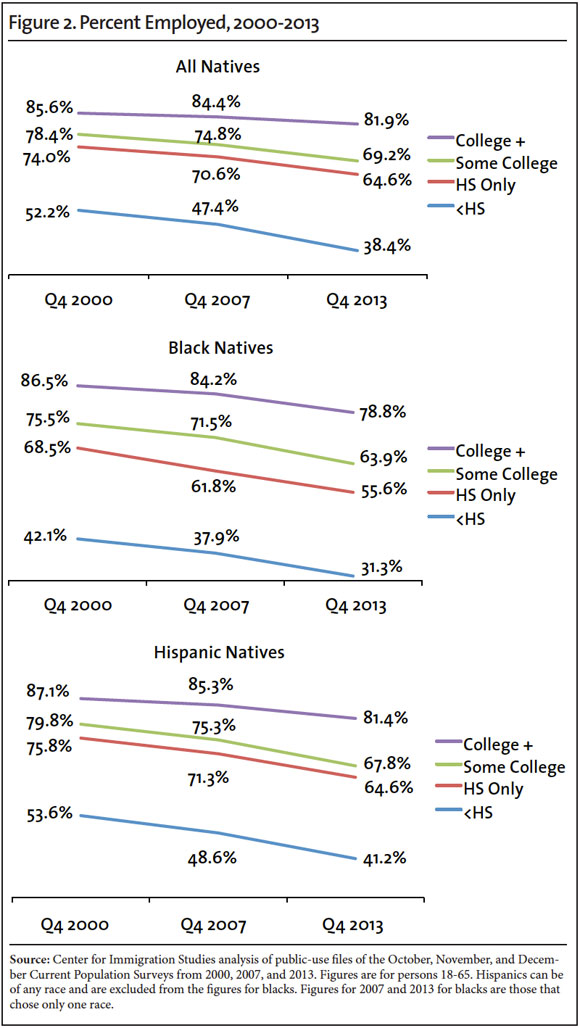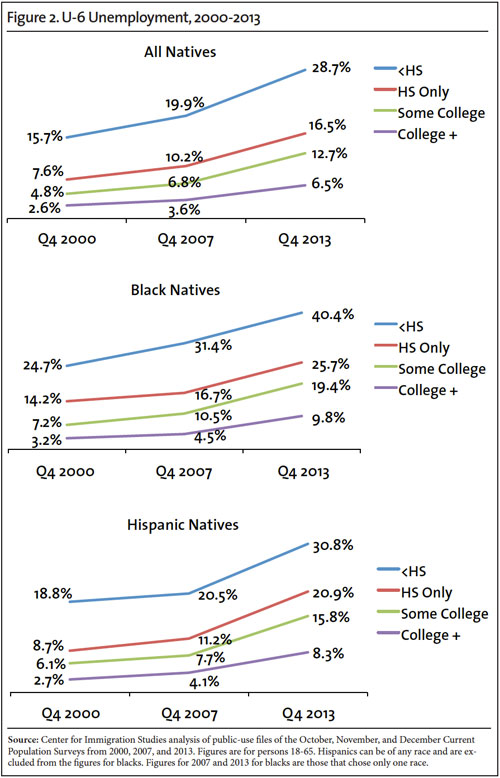Using the most common definition of STEM jobs, total STEM employment in 2012 was 5.3 million workers (immigrant and native), but there are 12.1 million STEM degree holders (immigrant and native).
Only one-third of native-born Americans with an undergraduate STEM degree holding a job actually work in a STEM occupation.
There are more than five million native-born Americans with STEM undergraduate degrees working in non-STEM occupations: 1.5 million with engineering degrees, half a million with technology degrees, 400,000 with math degrees, and 2.6 million with science degrees.
An additional 1.2 million natives with STEM degrees are not working — unemployed or out of the labor force in 2012. Despite the economic downturn, Census Bureau data show that, between 2007 and 2012, about 700,000 new immigrants who have STEM degrees were allowed to settle in the country, yet at the same time, total STEM employment grew by only about 500,000.
Of these new immigrants with STEM degrees, only a little more than a third took a STEM job and about the same share took a non-STEM job. The rest were not working in 2012.
Overall, less than half of immigrants with STEM degrees work in STEM jobs. In particular, just 23 percent of all immigrants with engineering degrees work as engineers.
In total, 1.6 million immigrants with STEM degrees worked outside of a STEM field and 563,000 were not working.
The supply of STEM workers is not just limited to those with STEM degrees. Nearly one-third of the nation's STEM workers do not have an undergraduate STEM degree.
Wage trends are one of the best measures of labor demand. If STEM workers are in short supply, wages should be increasing rapidly. But wage data from multiple sources show little growth over the last 12 years.
Real hourly wages (adjusted for inflation) grew on average just 0.7 percent a year from 2000 to 2012 for STEM workers, and annual wages grew even less — 0.4 percent a year. Wage growth is very modest for most subcategories of engineers and technology workers.


Of the 472 civilian occupations, only six are majority immigrant (legal and illegal). These six occupations account for 1 percent of the total U.S. workforce. Moreover, native-born Americans still comprise 46 percent of workers even in these occupations.